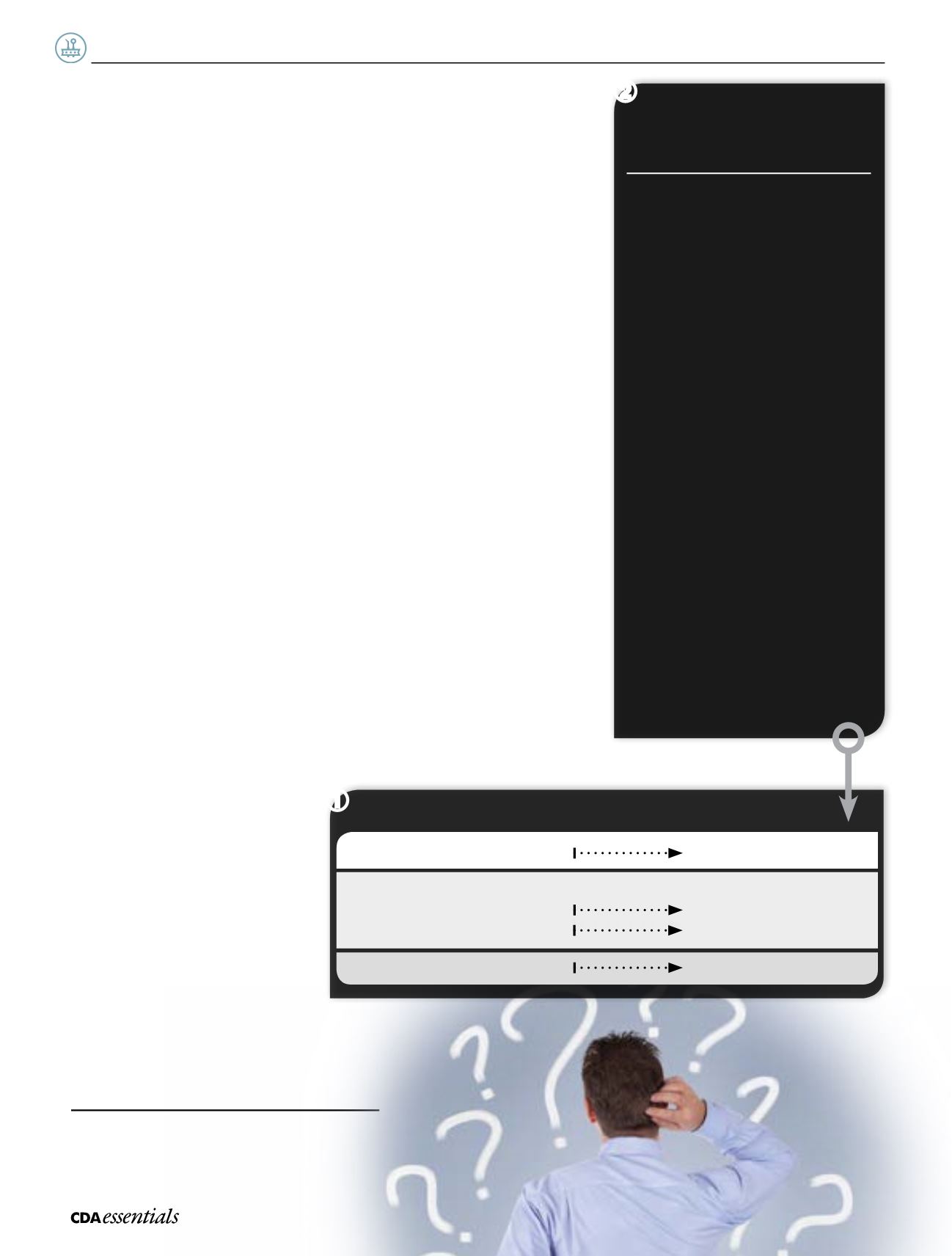

12
|
Volume 1 Issue 7
CDA
at
W
ork
Volume 1 Issue 7
|
Note:
Dentistsandorthodontistsshouldseektheadviceoftheirtaxprofessionalto
determinehowtheserulesapplytotheirparticularcircumstances.
*Theterms“dentalpractice”orthe“dentist”areusedtogenerallyrefertothepersonresponsible forGST/
HSTregistration,which isona legalpersonbasis– i.e.,asoleproprietorship,partnershiporcorporation.
What is the difference between goods
and services that are tax-exempt versus
zero-rated?
An exempt good or service is not
subject to GST/HST or QST but a zero-
rated good or service is taxable at 0%.
Diagnostic and treatment services
(other than cosmetic services) are
generally tax-exempt, whereas artificial
teeth and orthodontic appliances are
taxable at 0%.
In both tax-exempt and zero-rated
goods and services, the provider does
not collect or report any tax. However,
the distinction is important because
a practice cannot claim ITCs or ITRs to
recover taxes paid by the dentist to
provide tax-exempt goods or services.
On the other hand, a dental practice
providing taxable (including zero-rated)
goods or services may claim ITCs or ITRs
to recover the GST/HST or QST paid on
related costs. (
See Box 2
)
What is the status of the CRA policy
relating to dentists’ and orthodontists’
eligibility to claim ITCs?
The CRA policy relating to dentists’
and orthodontists’ eligibility to claim
ITCs was set out in a letter to the CDA
in May 2004. The policy originated with
the Orthodontics Supplies Agreement,
an administrative agreement from
1998 between the CRA, CDA and the
Canadian Association of Orthodontists.
The 2004 CRA interpretation still
applies. It explains that ITCs may be
claimed for the GST/HST on direct
costs (e.g., taxable laboratory fees) and
eligible indirect or overhead costs (e.g.,
lease of the office and cost of utilities)
to the extent the costs were incurred
for consumption or use in the making
of taxable sales, and provided the
indirect costs are incurred for at least
10% in taxable activities. As a result,
indirect costs must be allocated to
exempt and taxable activities for ITC
and ITR purposes.
CRA’s administrative policy on ITC
eligibility requires that the dentist
or orthodontist patient fees identify
separately charges for taxable sales
(e.g., an artificial tooth or orthodontic
appliance), as distinct from dental
services that are tax-exempt (e.g.,
diagnostic service).
Are there anticipated changes to the
policies onGST/HST andQST for
dentists?
CRA is currently reviewing the
arrangement and CDA is aware of this
situation. CDA provided a submission
to the CRA and will be involved in
discussions with the CRA in regards to
the status of their review. In the interim,
the Orthodontics Supplies Agreement
and the broader CRA administrative
policy relating to dentists’ eligibility
to claim a portion of the GST/HST and
QST they pay on costs continues to
apply. If any changes are introduced,
the CRA has indicated that they will be
introduced on a go-forward basis, not
retroactively.
a
Examples of taxable and
exempt dental services
Tax Exempt
• goods or services covered under a
provincial health care plan
• consultative, diagnostic and
treatment services (excluding services
for cosmetic purposes)
• dental hygienist services (excluding
services made for cosmetic purposes)
Taxable
Standard tax rates
• cosmetic services not for medical or
reconstructive purposes
• the provision of medico-legal reports
to insurance companies or lawyers
• rental of office space or provision of
parking
Zero-rated
• orthodontic appliances, artificial
teeth
• parts, accessories or attachments
specially designed for artificial teeth
or orthodontic appliances
➋
Total taxable supplies
= $0
Cannot Register
Total taxable supplies
> $30,000
Registration Mandatory
Total taxable supplies
< $30,000
i) significant ITCs available?
Register Voluntarily
ii) minimal or no ITCs available?
Do Not Register
To Register or Not To Register?
➊


















